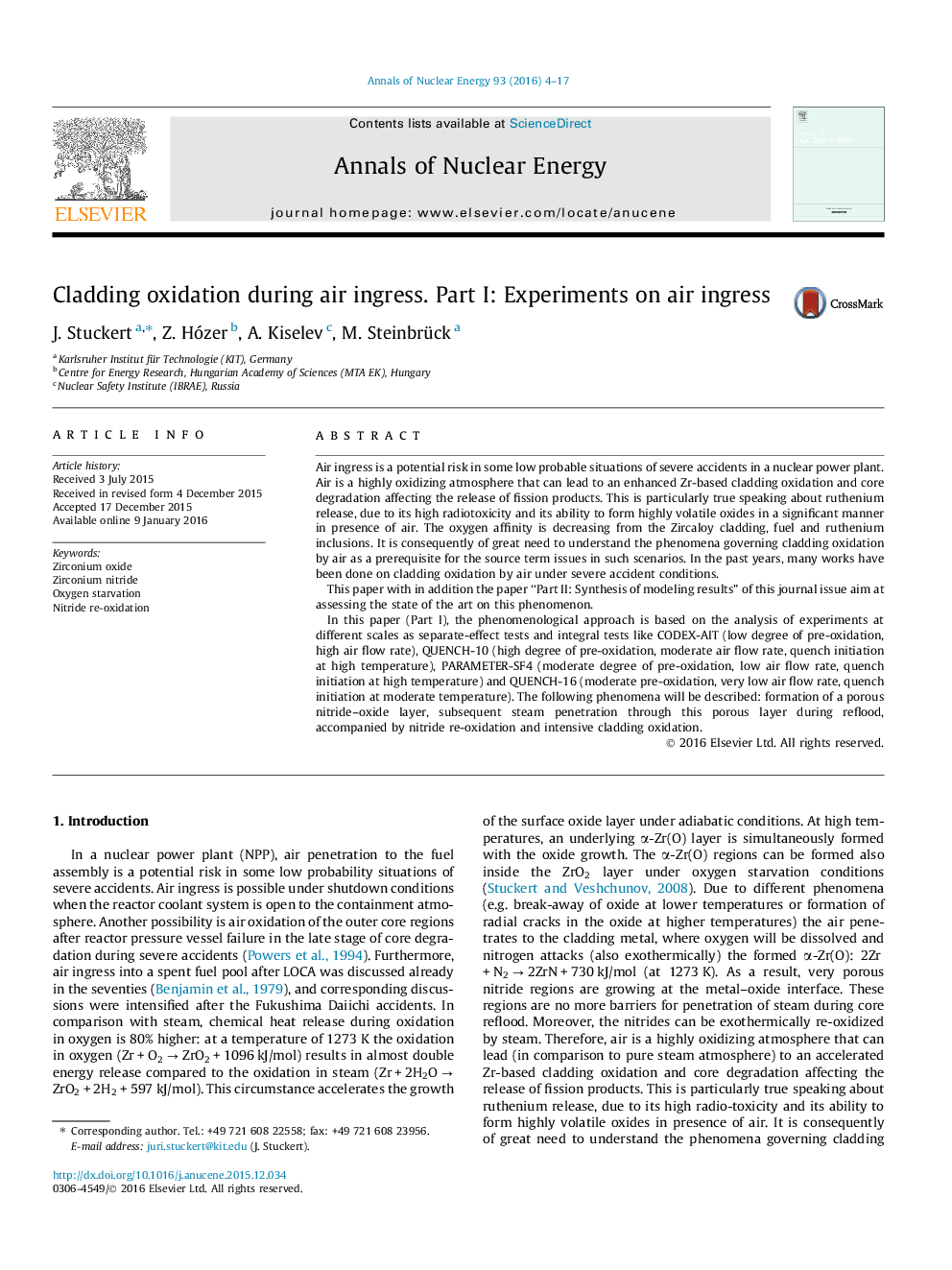| کد مقاله | کد نشریه | سال انتشار | مقاله انگلیسی | نسخه تمام متن |
|---|---|---|---|---|
| 1728033 | 1521104 | 2016 | 14 صفحه PDF | دانلود رایگان |
• Summary of recent experiments on air ingress.
• Reaction of nitrogen with α-Zr(O) under oxygen starvation conditions.
• Formation of very porous and fragile structure at the outer cladding surface.
• Exothermic re-oxidation of nitrides in steam.
• Accelerated penetration of steam through the porous oxide layer during reflood.
Air ingress is a potential risk in some low probable situations of severe accidents in a nuclear power plant. Air is a highly oxidizing atmosphere that can lead to an enhanced Zr-based cladding oxidation and core degradation affecting the release of fission products. This is particularly true speaking about ruthenium release, due to its high radiotoxicity and its ability to form highly volatile oxides in a significant manner in presence of air. The oxygen affinity is decreasing from the Zircaloy cladding, fuel and ruthenium inclusions. It is consequently of great need to understand the phenomena governing cladding oxidation by air as a prerequisite for the source term issues in such scenarios. In the past years, many works have been done on cladding oxidation by air under severe accident conditions.This paper with in addition the paper “Part II: Synthesis of modeling results” of this journal issue aim at assessing the state of the art on this phenomenon.In this paper (Part I), the phenomenological approach is based on the analysis of experiments at different scales as separate-effect tests and integral tests like CODEX-AIT (low degree of pre-oxidation, high air flow rate), QUENCH-10 (high degree of pre-oxidation, moderate air flow rate, quench initiation at high temperature), PARAMETER-SF4 (moderate degree of pre-oxidation, low air flow rate, quench initiation at high temperature) and QUENCH-16 (moderate pre-oxidation, very low air flow rate, quench initiation at moderate temperature). The following phenomena will be described: formation of a porous nitride–oxide layer, subsequent steam penetration through this porous layer during reflood, accompanied by nitride re-oxidation and intensive cladding oxidation.
Journal: Annals of Nuclear Energy - Volume 93, July 2016, Pages 4–17
